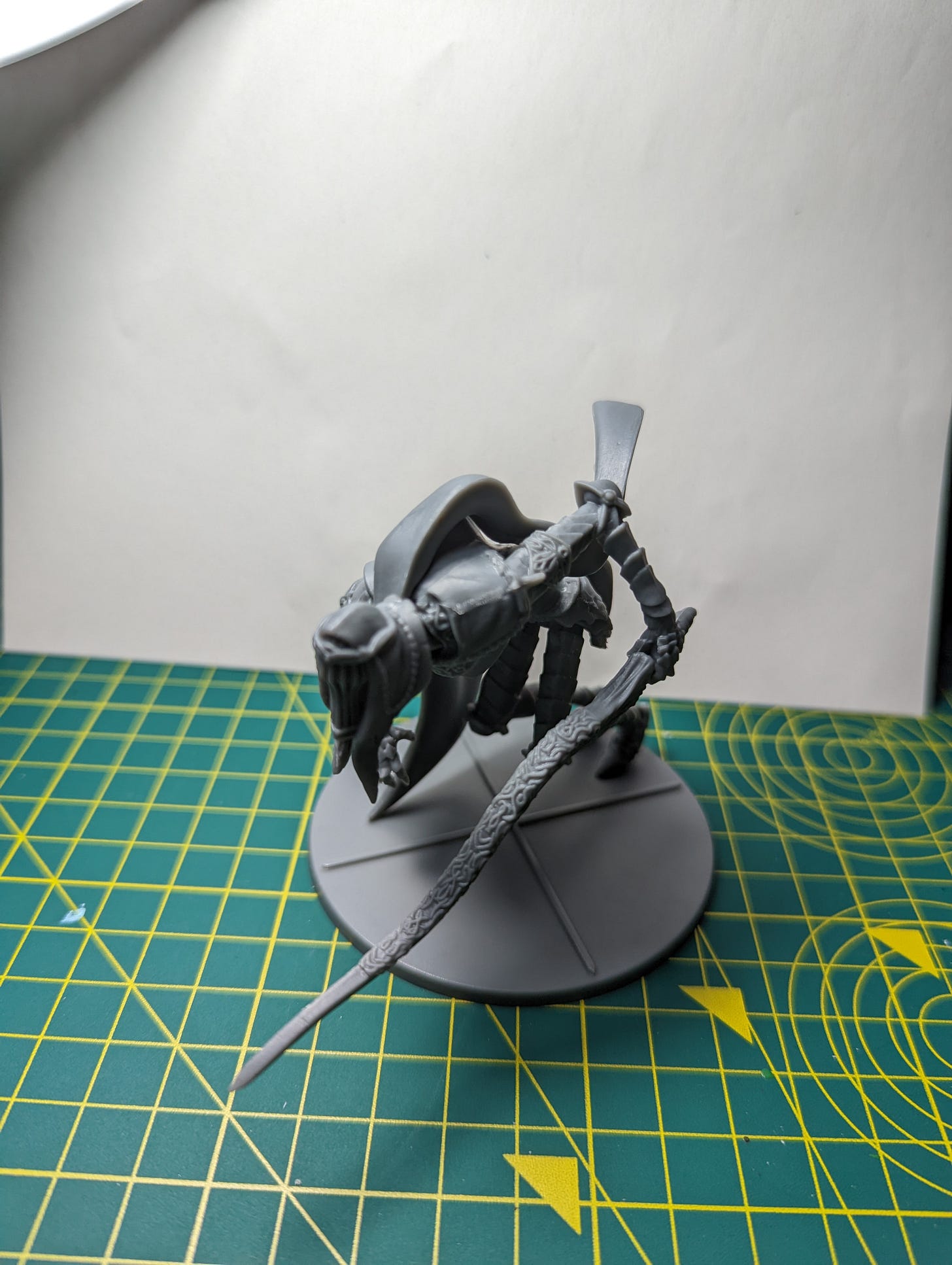The Deadly Waltz in the Valley
After painting my first larger miniature last time with the Lich Empress, I was a bit more confident with what I could strive for. And so, I am taking on the beautiful behemoth that is the Dancer of the Boreal Valley from Dark Souls 3... Or well more specifically, the Dark Souls board game
Facing new challenges
I began painting the Dancer like any other miniature, cleaning, washing, and priming it. Once these basic steps were complete, I was faced with a challenge I was really scared of taking on - painting metal.
Painting large metal areas was always intimidating for me, as I never managed to use metallic paints to their full capabilities. And painting nonmetallic metals just felt way out of my skill level. However, this time I was determined to practice and learn how to paint with metallic paints, or as the miniature painting community calls it - painting true metallic metal.
I spent quite a few hours watching videos, reading other blog posts, reddit forums trying to absorb as much information on how to paint metal. And I got some new appreciation on what kind of effects you can get from painting true metallic metal. I obviously still need quite a lot of practice to bring out the best qualities of the paints, but for once I do not feel so intimidated.
Painting the Dancer
I began the painting process with base coating the armor of the dancer with a mixture of 2 different paints, Iron Warriors and Rhinox Hide. Both paints are from the Games Workshop Citadel paint line. As you will see, during this painting process, I only used Citadel paints rather than Army Painter, as I wanted to experiment not only with new techniques, but also paints.
Back to the base coat. To coat the metal armor, I used a technique called over brushing. Unlike typical dry brushing were you use as little and as dry paints as possible to highlight the miniature, with over brushing you want your paints to be a bit damp.
Once the base coat was complete, I dry brushed some Iron Warriors on top of the base coat to accentuate the metallic silver of the armor. I then gave the armor a finishing touch of covering it with the Nuln Oil shade.
Once the armors were complete, I moved on to painting the accessories. I wanted the crown and the jewellery to stand out, so I painted them gold, once again shading them with Nuln Oil to darken the shine. I wanted the model to look like it has seen a few battles, leading to the armor being unclean.
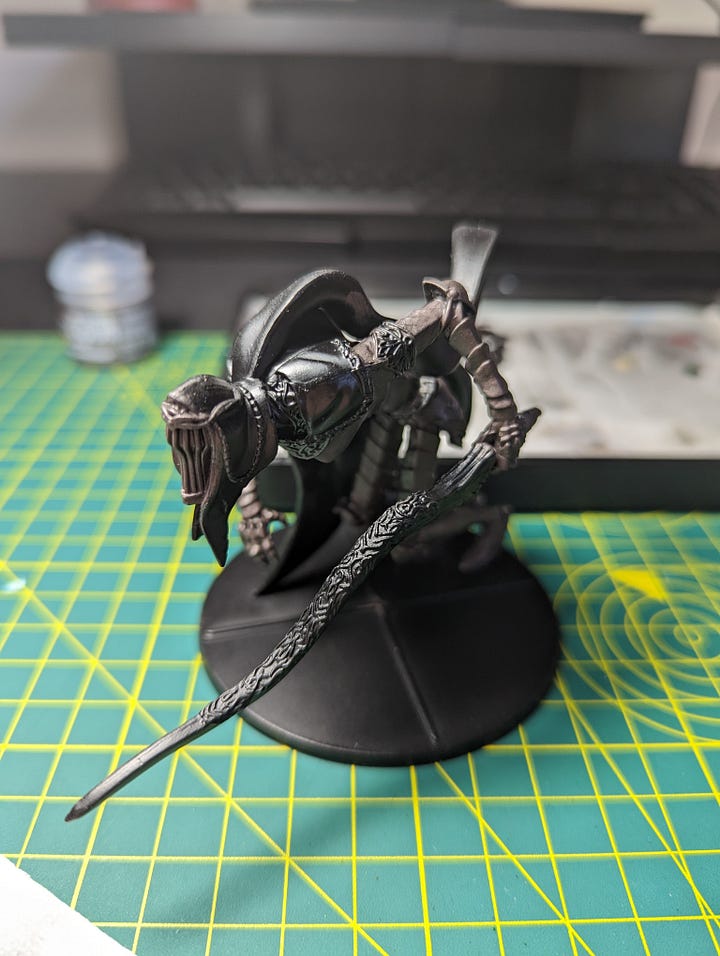
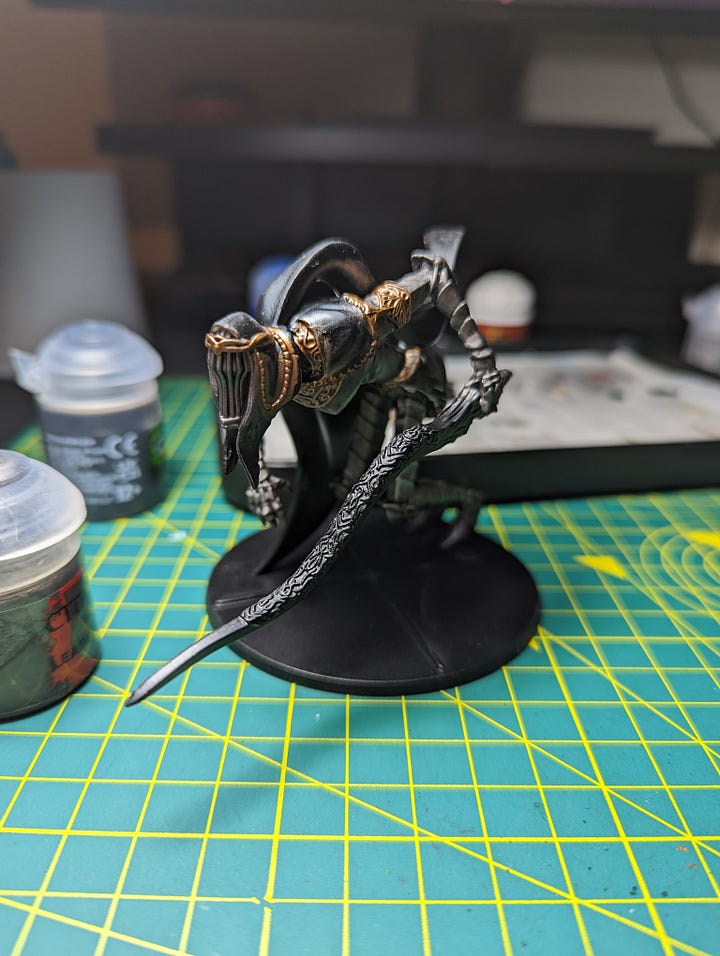
Once the metal was complete, I moved on to the coat, hood, veil thing that the Dancer is wearing. In the game this veil is translucent, but on this model, it was made from hard plastic, so I just went with it.
I began with basing the veil in a darker blueish green colour, specifically I used Incubi Darkness. After 2 layers of thin coats, and a bit of shading with blue ink, the veil was done, or so I thought. But more on that later.
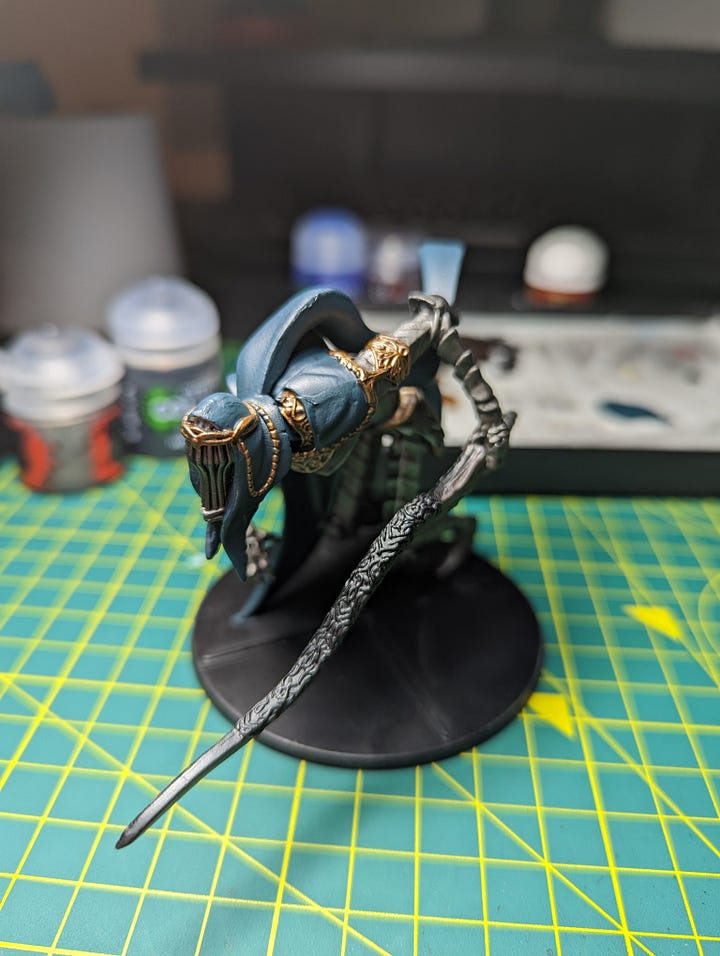
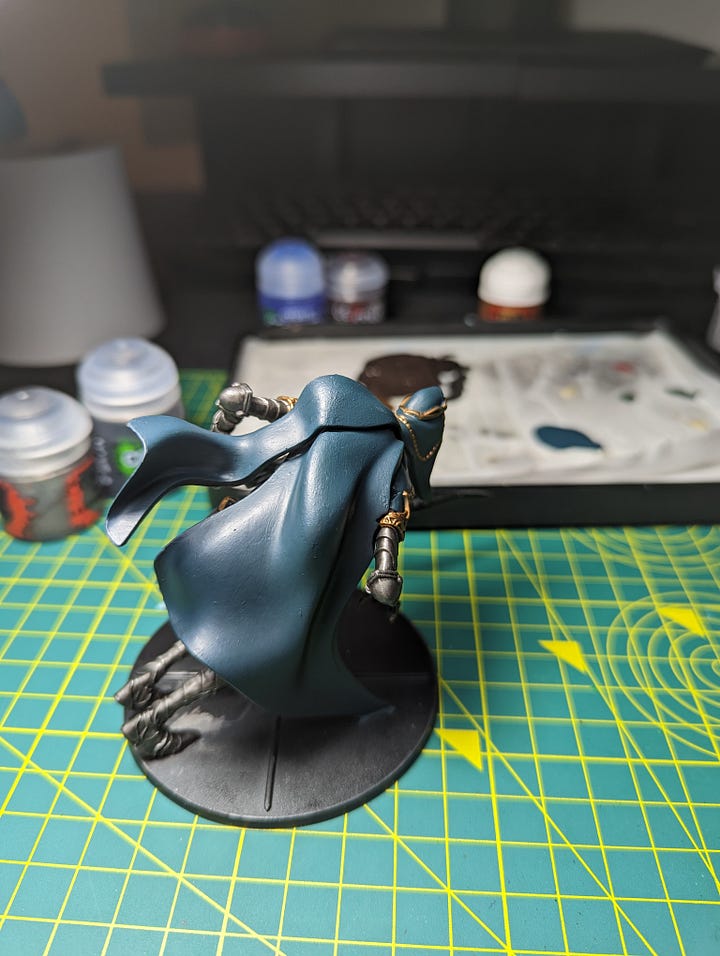
Once the Dancer itself was complete, for the most part, it was time for her Sword. I tried looking up as many references to her sword as I could, but none really spoke to me. From the game model, I could see that the blade would catch fire and glow, but as this model did not have a flame effect on it, I couldn't really capture the same essence. Looking at how other people painted the same miniature, the blade would fall into two main categories, some would paint the blade red or yellow as if it were on fire while keeping the markings on the top darker. Others would do the opposite and paint the blade in normal metallic colours, and the markings would then resemble flames.
I couldn't really figure out how I wanted to paint the blade for a while, until eventually I made up my mind. I painted the blade as if it is starting to set aflame from its tip. With that in mind, I base coated the blade in Iron Warriors, and then began the process of blending reds and yellows from tip to hilt. It was not easy, however, after a couple of tries, I was happy with the results.
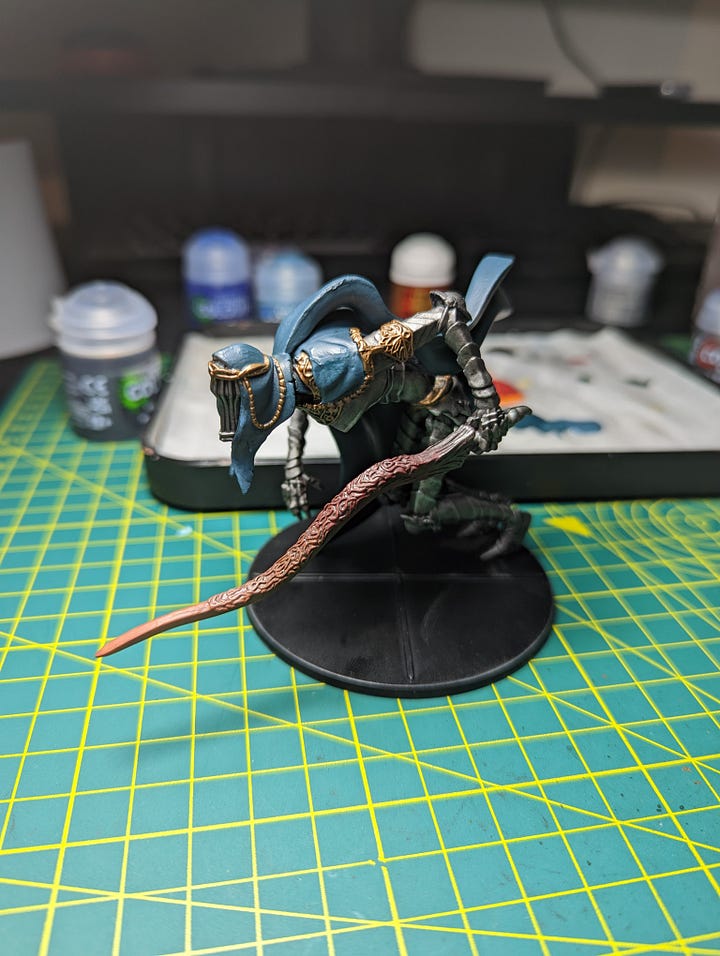
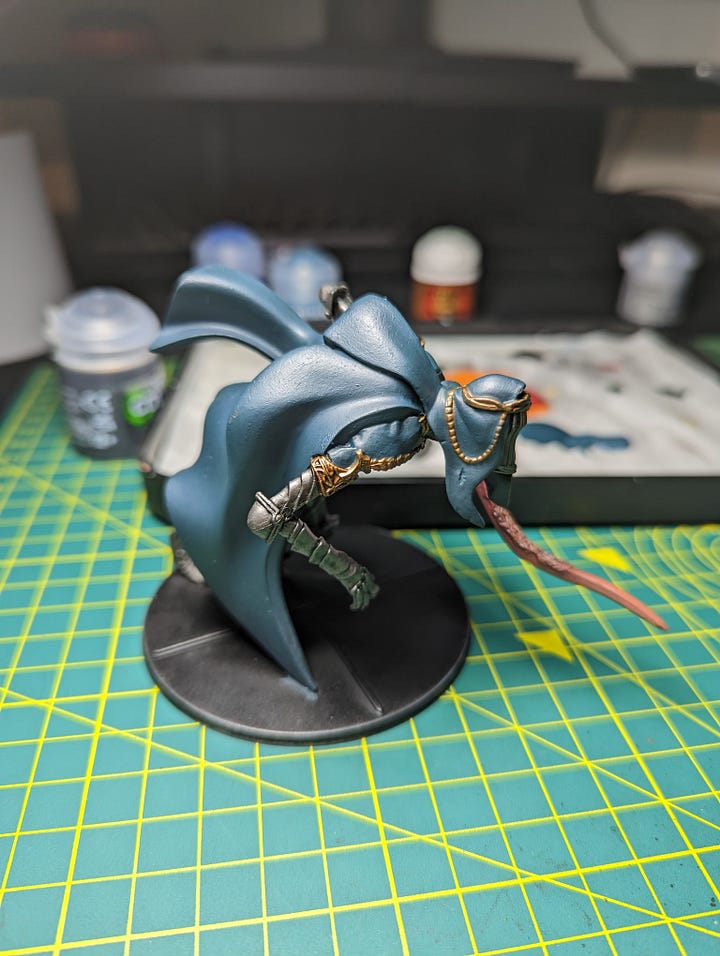
Looking at the figure the way that it was, it seemed like it was missing something, and in my opinion that was some shine on the model from the blade. I figured a blade that emits flame and light, would shine on the creature that is wielding it. And with that I began trying to add some glow to the areas that I thought would be lit up by the blade. From the arm that is holding the sword, to the torso I gave it my best to light up the miniature, and even though it may not be the pretties sight, I was still happy with how it turned out.
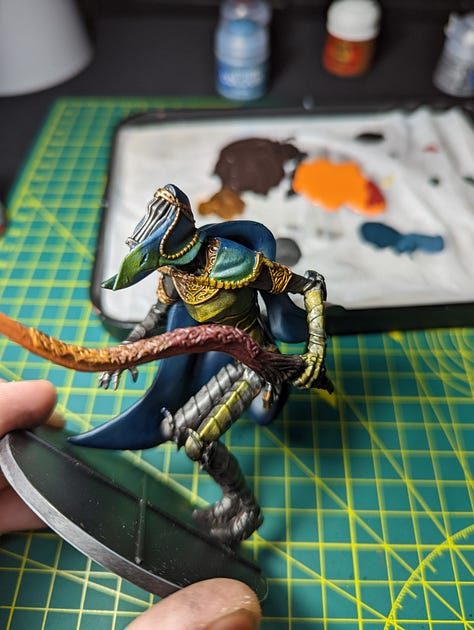
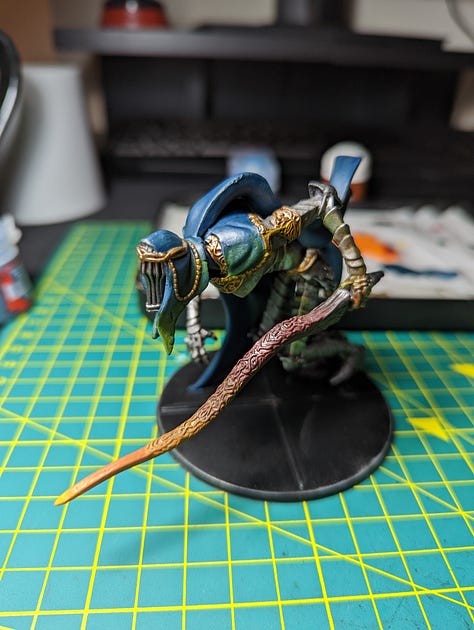
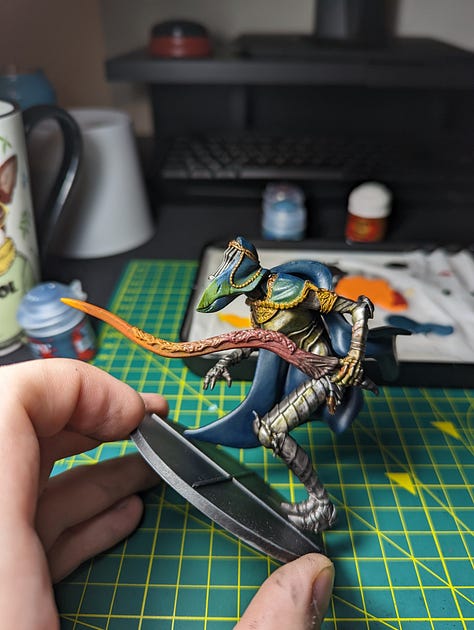

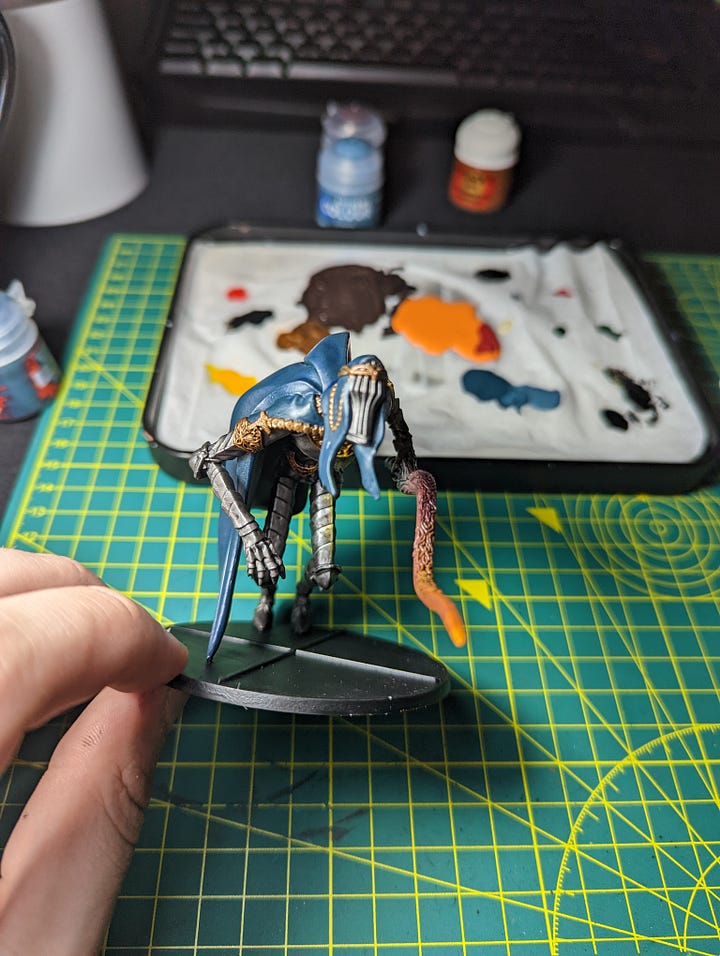
Once the miniature was basically complete, I realized that the veil is made up of two parts, one seems to be coming straight from the head piece, while the other looks to only cover the armor. This gave me the idea of differentiating the two. To make the head piece stand out, I gave it a layer of some lighter blue colours bringing in the somewhat ghostly look of the Dancers veil from the game itself.
A Fitting Dance Floor
Looking at the miniature and the way it turned out, having a blank black base seemed like a waste. So, I decided to spruce it up a bit. I removed the miniature from the base and took some modeling Green Stuff to begin the basing process. I covered the whole base with green stuff and cut some markings out that would resemble a shattered floor. Once the Green Stuff dried and hardened, I gave everything a nice coat of gray, before applying some dark washes. Once everything dried, all that was left was to drybrush the base to bring out some of the detail that might have been lost in the shading process.
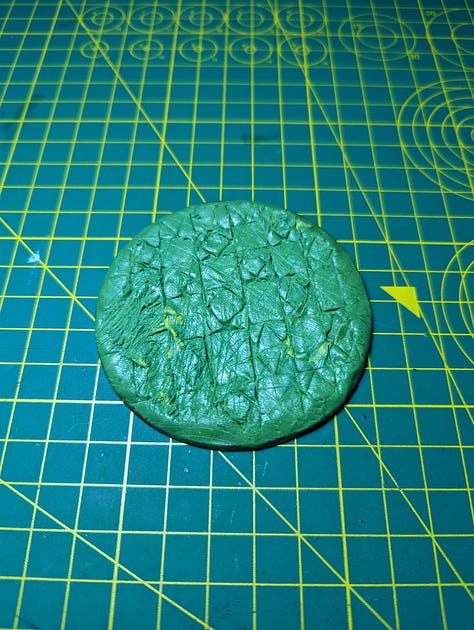

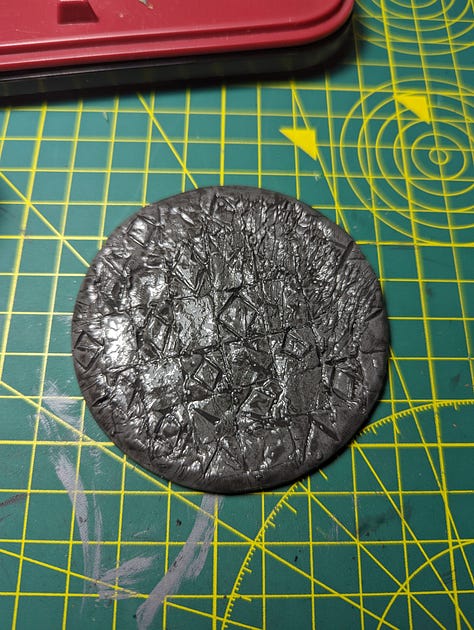
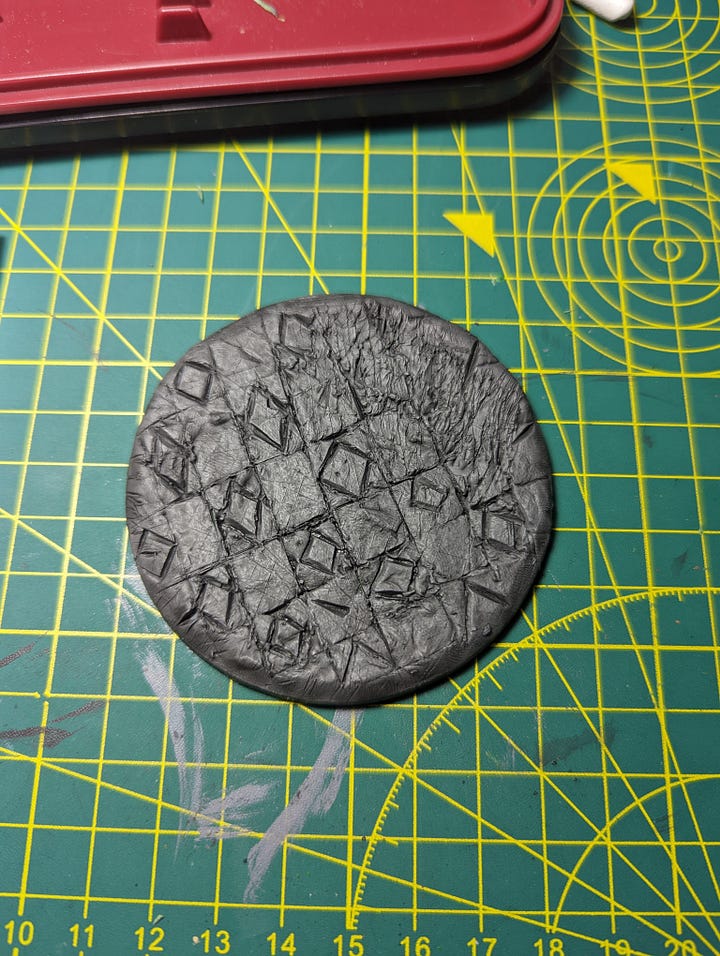
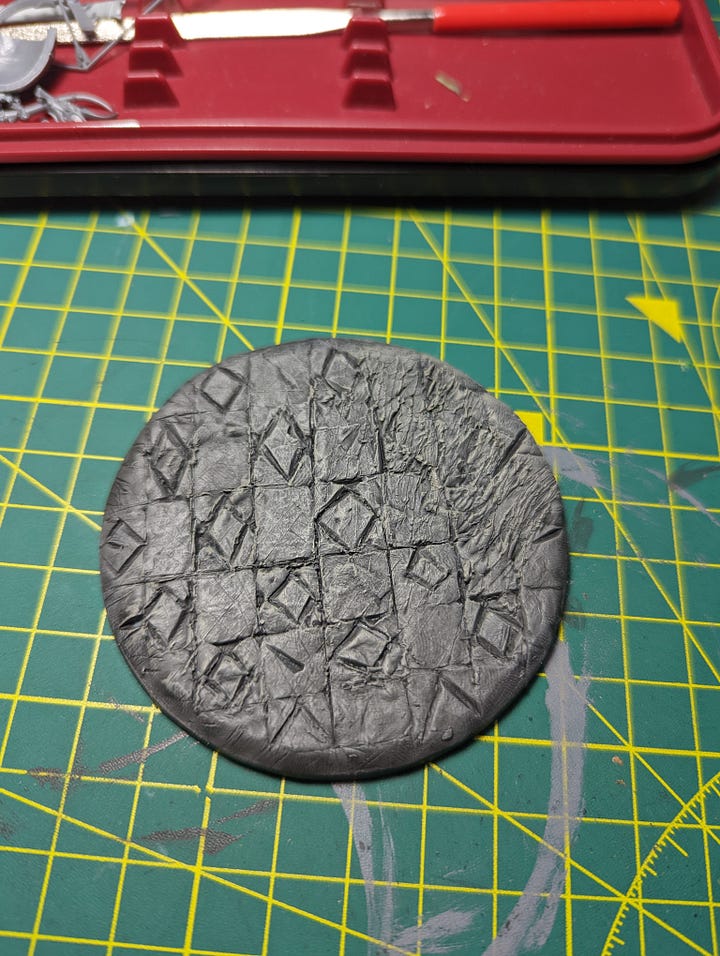
The Dancer of The Boreal Valley
After returning the model onto the base, the Dancer of The Boreal Valley was ready for her waltz of death with any Unkindled that would dare cross her path
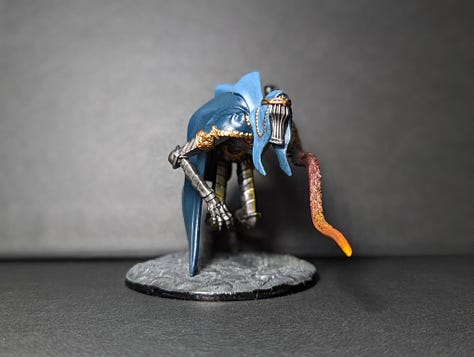
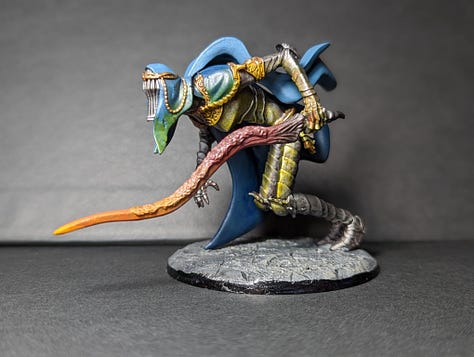
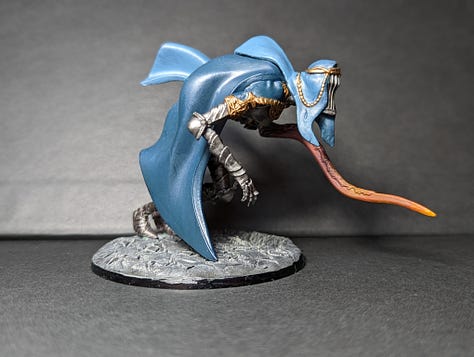
Closing Thoughts
To be honest I loved the way this miniature of the Dancer turned out. And considering it only took me one weekend to paint her, I am very proud of what I achieved. I tried out quite a few new techniques and paint, and even though there is still a lot to improve, I feel more confident than ever that I can keep improving and growing as a painter.



